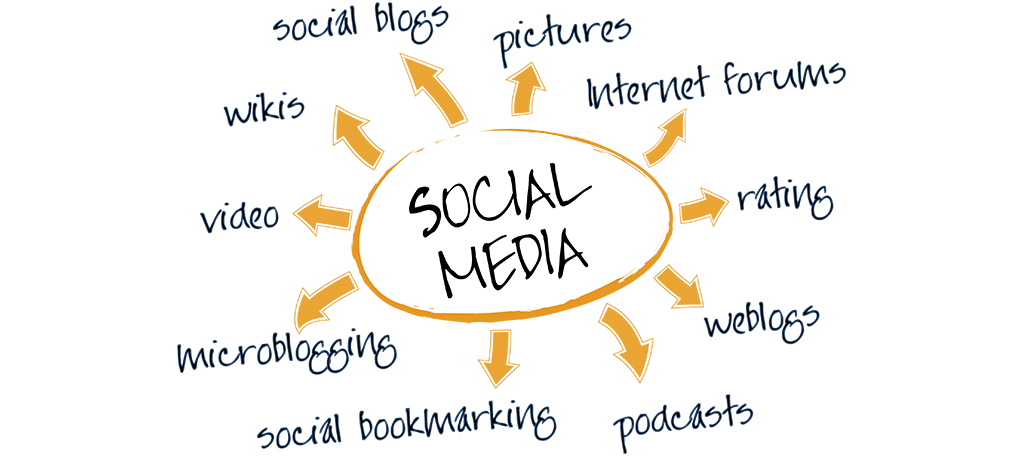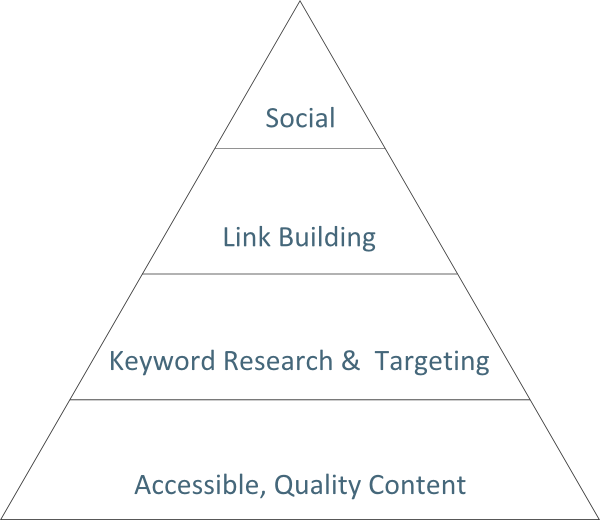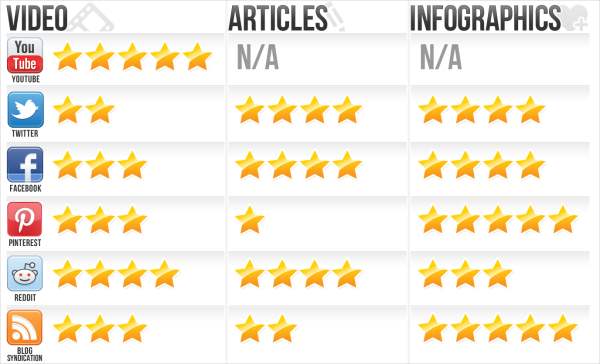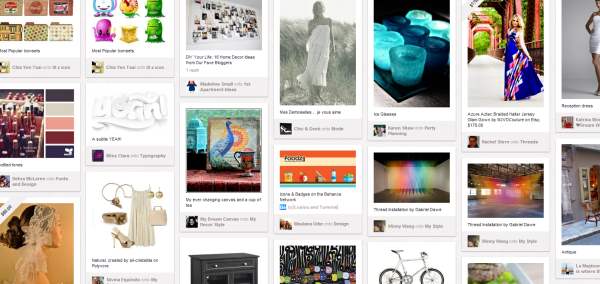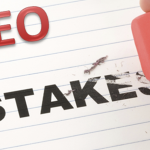Social Media Marketing can be a powerful tool for driving traffic to your site, building brand awareness and long term customer relationships, but failure to properly identify the characteristics of your market and develop a plan to engage with users will only lead to wasted time and money. This post shows you how social media fits into your overall marketing strategy, which platforms you should be using and tips for engaging with your followers.
Before You Start Getting Social
Before you get started with social media it’s important to understand how it fits into the inbound marketing cycle. The image below shows a condensed version of SEOmoz’s SEO Pyramid.
You need to have the base of the pyramid before you can start working with the top of the pyramid. Social media is what you do when you have something great to share already. If your content is weak, the greatest social media strategy in the world is likely to fail. Imagine a user visits your website, dislikes it and leaves. They may never visit again. So whilst Social Media is a fantastic tool, it is not a replacement for existing SEO best practice.
Which Social Media Platform
Image Borrowed From BlueGrass
Picking a platform is all about understanding your audience, the industry in which you operate and the type of message you will be sending. The following is a very basic guide to the top social media platforms and types of message they are most effective for:
Facebook: Well suited to less formal communications. Interesting facts and images which are easily digested by users. Facebook is primarily used by people in the casual, social and consumer context. Think at home, on the sofa, watching TV. In depth information is generally going to be less effective as people are unlikely to spend time time looking at it. Facebook also creates a community around your business, so be prepared for your customers to talk to each other and understand that you might not always like what they have to say.
Twitter: Good for both business and consumer communication. Twitter allows an exceptional freedom of communication between people and can be useful for more direct interactions and engagement with customers. Well suited to interesting nuggets of information and sharing. Great for updating your users with new content and product information. Seek to have a two way dialogue rather than simply posting information. Building engagement will be beneficial from both a feedback and promotional viewpoint.
Google Plus: The one you probably don’t see the point in using. Google plus has a large number of users but much lower levels of engagement. The image below shows a quick break down of it’s users top occupations and the top 10 companies listed as employers. As you can see it’s predominantly made up of people in the tech industries. 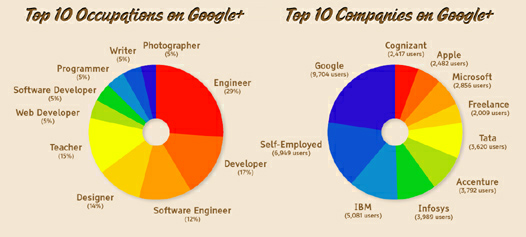
So if your in the tech industry G plus is going to be a great way of engaging with users.
The more important thing to consider with G+ is the impact it may have on results in the future. Google has publicly stated that social signals will play an important role in ranking factors in the coming years and G+ and, being the Google platform, is going to be a significant influencer in this area. For those who are early adopters of Google social platform their will be big benefits, such as the authorship markup, which is only available to those with a G+ profile.
LinkedIn: Obviously highly targeted at users operating in a professional capacity, LinkedIn is the place to post industry specific, technical information. Information posted here can be much more in depth than on other social platforms.
Pinterest: Whilst still in its infancy, Pinterest has been a fantastic driver of traffic for many businesses. If you have interesting and attractive images on your site you should be looking to capitalize on them right now.
Planning Your Social Activities
Once you know who you’re communicating with and which platform will be most effective, you need to have a plan for releasing content and engaging with users. Whilst it will vary with each platform, an outline could go as follows:
- Monday: Blog Post, Quick Tip, Question, Comment On Follower Posts
- Tuesday: Quick Tip, Share Third Party Content, Respond To Questions, Add Photos Of Product/Service/Staff/Office
- Wednesday: Second Blog Post, Ask Questions, Respond to comments, Quick Tip
- Thurday: Quick Tip, Respond To Comments, Comment On Third Party Content, Tag Engaged Users In Relevant Posts
- Friday: Video Post, Respond To Some Issues Over The Week, Add Short Entertainment Content
- End posts with a question and leave the conversation open. If you post a response to a comment by someone on your own content, ensure you are friendly, open and conversational, leaving room for the next person to answer.
- Tag People where appropriate, but don’t get spammy. Tagging people in a post is a powerful tool, but use it all the time an people will ignore you
- Be personal. Engaging on social isn’t like writing an email. You are having a conversation. Remember the saying: Write like you are talking to your best friend in front of your mother.
- When posting a link or an image, say something about it. The more you say, the more people feel they are able to respond.
Set Goals
- Building the size of the community eg: reach 200 followers
- Increase brand awareness eg: increase +1 shares/likes/tweets/comments by 100% in 3 months
- Increase traffic to the site by 100% in 3 months
Social Share Buttons
So you’ve got your social accounts up and running. It’s good idea to add some social buttons to your site. Just remember to add the right ones. This example below was seen on a hotel website recently. MySpace is fine if you are in a band or the music industry, but less useful for travel these days. Times change and your social buttons should too.
How Do You Engage On Social?
We’d like to hear your top tips for engaging on social media. What types of content do you prefer to post on which platform? Talk to us on our Google Plus Page.
